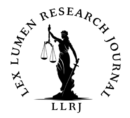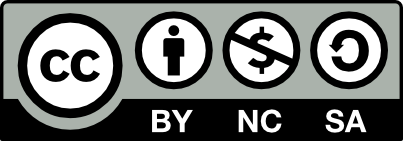Written by Lavanya Sundar,
Intern-Lex Lumen Research Journal,
June 2025
INTRODUCTION:
Ensuring strong governance, moral principles, and market discipline is becoming increasingly important in a sophisticated and evolving financial environment. The Draft Omnibus Framework for Recognizing Self-Regulatory Organizations (SROs) was introduced by the Securities and Exchange Board of India (SEBI) in January 2024 in recognition of this. In industries including mutual funds, stockbroking, research analysts, investment advisers, and other intermediaries, SROs that represent SEBI-regulated businesses are to be formally recognized and governed by this framework. The draft’s goals are to help SEBI enhance compliance and governance throughout the securities markets, allow regulated entities to self-organize, and uphold high professional standards. The framework’s necessity, structure, advantages, regulatory reach, possible drawbacks, and future directions are all thoroughly examined in this publication.As a result, the RBI has emphasized the need for a collaborative regulatory approach that balances innovation and systemic safety greater. To meet this need, the RBI introduced the “Omnibus Framework for Recognizing SelfRegulatory Organizations (SROs) for Regulated Entities” on 21th March 2024. The Association of Mutual Funds in India (AMFI) and the Insurance Brokers Association of India are two prominent examples of previously established SROs in the capital markets and insurance sectors. However, the goal of the RBI’s omnibus strategy is to create a cross-sectoral, standardized, institutionally sound approach to self-regulation that can be used for a variety of organizations under its supervision, including banks, NBFCs, payment service providers, and fintech companies.
BACKGROUND AND JUSTIFICATION:
Self-Regulatory Organizations (SROs) are not a novel idea in India or around the world. SROs, which are basically non-governmental organizations, have the authority to establish and enforce industry-specific regulations and standards among their participation. Institutions such as the Association of Mutual Funds in India (AMFI), the BSE, and the National Stock Exchange (NSE) have operated with varied levels of self-regulation throughout history. The quick growth of financial instruments and market players, however, has put a strain on regulatory capabilities. While retaining its oversight and enforcement authority, SEBI plans to assign some regulatory responsibilities to reliable and responsible SROs. The purpose of the proposed omnibus framework is to standardize the oversight, duties, and recognition of SROs.
GOALS OF THE FRAMEWORK:
There are multiple primary goals that motivate the Draft Omnibus Framework:
Encouraging Compliance Culture: SROs can lessen the load of micro-regulation by helping members develop a culture of self-control and moral behavior.
Improving Efficiency: SROs act as go-betweens for the regulator and regulated companies, facilitating the adoption of best practices and speedier grievance resolution.
Promoting Research and Innovation: SROs are supposed to encourage professional development, research and development, and innovation in their fields.
Standardization and Transparency: The objective of the framework is to provide consistent standards and protocols for identifying and operating SROs.
Market Development: Promoting shared accountability among industry players can aid in the development of a robust market.
ELIGIBILITY CRITERIA FOR SROS:
Under the draft framework, an applicant must fulfill strict eligibility requirements that guarantee trustworthiness and capacity in order to be recognized as an SRO. The primary requirements consist of:
Legal Status: A non-profit organization that complies with Section 8 of the Companies Act of 2013 must be established.
Governance: Needs an independent board composed of professionals, public interest directors, and industry experts.
Membership: Must have sufficient representation from the relevant industry segment (e.g., distributors of mutual funds, investment advisers, etc.).
Operational Capability: Adequate technology, infrastructure, and manpower to fulfill regulatory obligations.
Code of Conduct: It is necessary to establish a legally binding code of ethics and a disciplinary procedure for its members.
FUNCTIONS AND RESPONSIBILITIES OF SROS:
1.Standard Configuration:
Provide members with operational and moral guidelines.
Provide best practice manuals and advisory notes.
Hold sessions for capacity-building and training.
2.Monitoring and Surveillance:
Perform audits and inspections of participating organizations.
Keep an eye on market behavior and spot any irregularities or unethical behavior.
Redress of Grievances :
Keep a strong grievance procedure in place.
Create an independent ombudsman or comparable entity.
For unresolved or escalated concerns, coordinate with SEBI.
Corrective Measures: Establish disciplinary guidelines.
Reprimand, suspend, or suggest de-recognition for members who violate the rules.
Ensure due process and transparency in the enforcement process.
5.Advisory Role :
Provide SEBI input on market trends.
Encourage small or new entrants to comply.
Promote the use of process and technology advances.
SEBI’S SUPERVISION:
Although SROs will carry out their tasks, SEBI will continue to have the final say. It will carry out the subsequent tasks:
Recognition and De-recognition: Depending on compliance, SRO status may be granted or revoked.
Periodic Review: Regular or yearly audits, supervision, and performance reviews.
Enforcement and Inspection: SEBI has the authority to conduct direct inspections of SROs or step in when there is a failure or conflict of interest.
Consultation and Guidance: Offer the required support and guidance for policy.
In order to maintain equity and safeguard investor interests, SEBI will continue to have the authority to examine SRO decisions.
BENEFITS OF THE FRAMEWORK:
The Effectiveness of Regulations: SEBI can concentrate on systemic risks, enforcement, and policy-making by giving SROs routine or sector-specific tasks.
Economical Regulation: By encouraging self-governance, peer learning, and streamlined procedures, SROs lower compliance costs.
Development of Industry: SROs can direct funds toward benchmarking, training, and research, advancing the sector.
Enhanced Accountability and Trust: Investor trust in the capital market ecosystem can rise with improved internal compliance and dispute resolution.
Customized Law: SROs offer the adaptability to handle industry-specific issues and complexities that a central regulator would miss.
CHALLENGES AND CONCERNS:
There are certain issues with the SRO framework’s implementation despite its possible advantages:
Conflict of Interest : The challenge of punishing their own members may present itself to SROs, which could result in prejudice or insufficient enforcement.
The division of Regulatory: arbitrage and inconsistency may result from having several SROs in related industries.
Self-reliance and credibility: Fairness depends on keeping SROs independent from powerful industry actors or special interests.
Compliance Burden : Additional SRO oversight could be seen by smaller organizations as cumbersome or redundant.
In terms of size, experience, or financial sustainability, some industrial segments might not be developed enough to support an SRO just yet.
INTERNATIONAL PRACTICES:
Global Customs SRO models have been successfully adopted in a number of nations worldwide:
USA: One of the most well-known SROs in the securities industry is the Financial Industry Regulatory Authority (FINRA).
UK: Professional bodies have some SRO functions, even if they are mostly centralized under the Financial Conduct Authority (FCA).
Japan: A key SRO in overseeing broker-dealers is the Japan Securities Dealers Association (JSDA). By guaranteeing openness, monitoring, and stakeholder participation, SEBI’s draft framework complies with international best practices.
PUBLIC CONSULTATION AND STAKEHOLDER FEEDBACK:
To make sure that stakeholder viewpoints are taken into account, the draft was made available for public feedback. Suggestions were solicited from industry bodies, investment associations, market players, and legal professionals. Among the main areas of consultation were:
SRO independence and structure.
Overlap in the roles of SEBI and SRO.
Procedure for appealing SRO rulings.
Revocation and recognition criteria.
Rewards for signing up and adhering to SRO guidelines.
WAY FORWARD AND RECOMMENDATIONS:
The framework’s successful implementation requires that SEBI and stakeholders take a phased, inclusive, and balanced approach:
Phased Rollout: Start with more established industries (such mutual funds and registered investment advisers) before branching out to others.
One SRO per sector: If at all possible, steer clear of overlapping jurisdictions.
Governance and Transparency: Require stringent disclosure guidelines and independent audits.
Building Capacity: Promote technical assistance, funding, and training initiatives for nascent SROs.
Appeal Mechanism: Establish a strong appeals procedure for members who feel wronged by SRO rulings.
Incentivizing: Through SROs, provide regulatory or fee-based incentives for compliance.
CONCLUSION:
One of SEBI’s most important regulatory innovations is the Draft Omnibus Framework for Recognizing SROs. It shows how confident the regulator is in the market’s capacity to professionally and responsibly govern itself. In order to promote a cooperative regulatory environment that strikes a balance between investor protection and industry efficiency, SEBI has established a systematic, transparent, and participatory methodology. However, how well the framework is implemented will determine its success. It is crucial to make sure SROs are genuinely independent, well funded, and representative of all market segments. This effort has the potential to greatly improve the depth, robustness, and maturity of India’s capital markets provided it is carried out carefully.
REFERENCES:
Securities and Exchange Board of India (SEBI)
Draft Omnibus Framework for Recognising SROs – January 2024
(Primary official source with all clauses, objectives, and structure of the draft)
Press Information Bureau (PIB)
“SEBI releases Draft Framework for SROs for public comments” – January 2024
URL:https://pib.gov.in/PressReleasePage.aspx?PRID=1897432
Business Standard
“SEBI proposes common norms for self-regulatory organisations (SROs)” – January 22, 2024
URL:https://www.business-standard.com (Search article title to access)
The Economic Times
“SEBI’s omnibus framework for SROs explained: What does it mean for market intermediaries?”
URL:https://economictimes.indiatimes.com (Search the article by keywords)
Live mint
“SEBI releases draft for recognising self-regulatory bodies” – January 2024
URL:https://www.livemint.com (Look under SEBI/Policy section)
Financial Industry Regulatory Authority (FINRA) – U.S.
Global benchmark for SROs in capital markets
OECD Report on Self-Regulation and SROs
“Self-regulation and co-regulation in regulatory policy” – OECD, 2015URL:https://www.oecd.org/gov/regulatory-policy/self-regulation.htm
SEBI Annual Report (2023–24)
Contains background and vision for the SRO framework.URL:https://www.sebi.gov.in/sebiweb/home/HomeAction.do?doListing=yes&sid=7&smid=48


